#hedging techniques
Explore tagged Tumblr posts
Text
Protective Put Option Trading Strategy
The Protective Put Option Trading Strategy is a risk management technique used by traders to hedge against potential losses in their long stock positions. This strategy involves purchasing a put option for an underlying asset that the trader already owns. The put option provides the right to sell the asset at a predetermined price (strike price) within a specified time frame. The primary…
#Bear Markets#Bull Markets#Consolidation Phase#Dividend Stocks#Financial Derivatives#Hedging Techniques#Investment Strategies#Market Conditions#Options Hedging#Options Trading#Portfolio Management#Protective Put Strategy#Put Options#Risk Management#Stock market strategies#Stock Protection#Trading Examples#Trading Strategies#trading tips#Volatile Markets
0 notes
Text
0 notes
Text

we are holding Hedgie, while also using Second Hedgie as a pillow. the TECHNIQUE!
188 notes
·
View notes
Text

"7.5/10, it was alright."
4 notes
·
View notes
Text
Ways to Ground:
"It's a reminder to consistently humble ourselves in the Craft, to stay close to the edge of the natural realm, science and logic." -- Frankie Castanea, Spells for Change
Eat or drink (my classic go to, like a single cookie. Wine's also a classic.)
Walk barefoot (especially outside or on grass)
Touch a plant or animal (just a natural thing I do, happy there's a word for the feeling I get afterward.)
Work with clay
Visualization of yourself as a tree with roots, grounding excess energy

6 notes
·
View notes
Photo
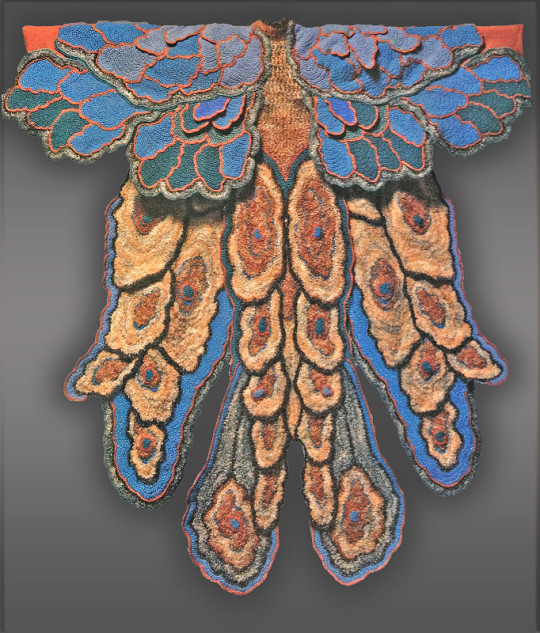

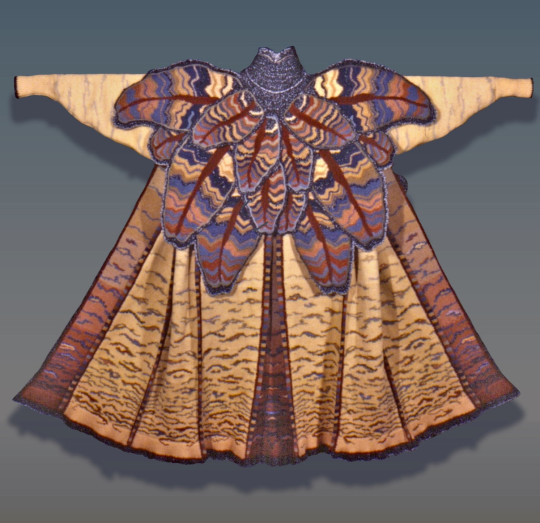




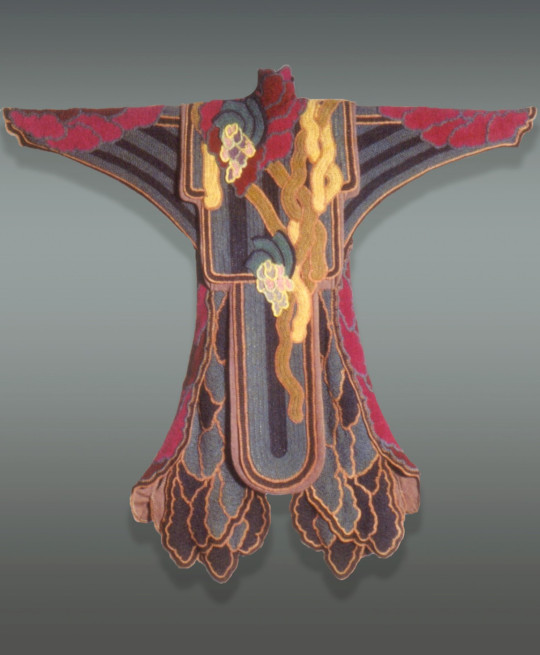


Textiles from Sharron Hedges' studio.
Julie Schafler Dale from Art To Wear:
"...While Sharron's work is ephemeral and fluid, it is also demanding and firm. Her strength is grounded in …years of discipline, technique, evaluation, and determination…Sharron’s most cherished muse is color itself: the subtle optical illusions, the vibrancy achieved through juxtaposing colors, bouncing them off one another…As Sharron moves further away from crochet...what has not changed is the consummate craftsmanship and discipline Sharron brings to all she touches..."
Sharron says: "A few years ago I left my heart in New York City, but still work in both fiber and pattern design in my new home in North Carolina. Here I'm able to grow gardens, always a passion for me, and they are now inspiring a new way of making art.
I've gardened for so many years and always have marvelled at the forms, the color, the life that explodes over and over again, in awe at each sight. And while I never get tired of being able to experience this, I'm really excited to tap into the amazing life of plants in a different way. Ecoprinting has truly given me a great renewal in life, and in art. I am beyond excited to work with this process."
https://www.sharronhedges.com/about
© All rights reserved content text and image Sharron Hedges
9K notes
·
View notes
Text
'“I didn’t want to be a cog in that machine any more. For some time now, I have been both disgusted and horrified by the way higher education has developed into a cash register – essentially a money-making, MBA, lawyer-run, hedge fund-cum-real estate operation, with a minor sideline in education, where money has determined everything, where respect for pedagogy is at a minimum,” Khalidi says. “Research that brings in money, they respect. But they don’t care about teaching, even though it is the students with their tuition who provide a huge proportion of private universities’ budgets.”
[...]
Khalidi resists questions that demand a crystal ball. He is a historian who prefers to focus on analyzing what past actions tell us. His next book will focus on Ireland, and how it was a laboratory for Palestine. It stems from a fellowship he had recently at Trinity College, Dublin. He says that to understand Palestine, you have to understand British colonialism more broadly. He is hoping to examine key figures in the British aristocracy whose Irish experience was central to everything they did afterwards – people such as Arthur James Balfour, Sir Charles Tegart and Gen Sir Frank Kitson. He is hoping to show how the Irish experience was exported to India, Egypt and Palestine, and then returned to Ireland again during the Troubles, having been magnified in the colonies. “It is astonishing how personnel and counter-insurgency techniques, like torture, assassination, find their roots with the British in Ireland,” Khalidi says.
His personal family history, his scholarship and the front row seat he had as part of the Palestinian advisory group during talks in Madrid in the early 1990s show him that until the US shifts its total, uncritical support for Israel, the Palestinians will not get anything close to sovereignty. “It’s never statehood, it’s never self-determination,” he says. “It is an extension into the future of the status quo with epaulets.”
When he looks back at the 1990s, he is reminded of what the Palestinians were up against, and why they didn’t stand a chance. And why the peace efforts of the time were destined for failure. Not only did Israel have its own lawyers, combing over every detail, it had the backing of the US too. Khalidi understands that it was a fundamental error on the part of Yasser Arafat and his team to think that the US could be an honest broker.
“That is what drives me: Israel cannot do any of this – killing this number of Palestinians [more than 40,000 at the time of writing] without the US and western European countries. The US gives Israel the green light. It is a party to the war on Palestine. That is what drives me as an American. I am not just at this because I am a Palestinian. It is because I am an American. Because we are responsible.”'
494 notes
·
View notes
Text
Types Of Witchcraft
Note: These are general/basic explanations of different classes of magick/witchcraft. Practitioners can fall into multiple or none of these categories. Ultimately, only an individual can choose their labels.

Green: Utilizing greenery/plants/herbs/flowers in herbal/nature magick, such as creating blends of different plants or primarily using herbs in spellwork. May keep a garden and take great pride in their workings/connection to the earth and nature.
Hedge/Shamanic: A type of magick that's more oriented towards spirit work, Otherworld and astral travel, dream work, spiritual power and healing. May work with psychedelic/psychotropic/toxic plants and fungi as spiritual tools (ie: flying ointments/teas made from amanita muscaria or datura)
Sea: A type of magick derived from materials/abstract ideas involving the ocean world. Sea magick is worked using various items from as well as one's own connection to the sea and its creatures.
Storm: Magick that is worked by combining one's own energy with the energy of the weather, most commonly storms. Storm witches may have practices such as collecting storm water or snow, "whistling up" or manipulating winds, or performing rituals during severe weather.
Hearth/Kitchen: Magick performed through kitchen craft and/or mundane tasks/crafts around the home or for loved ones. Typically worked daily through food, herbal mixtures, crafting, decorating, and hobbies. May also work with the Fae/elements/nature.
Tea: Those who drink tea, make their own tea mixtures, or enjoy blending herbal remedies and often use reading tea leaves as their form of divination.
Urban: For those who live in or prefer an urban setting/lifestyle. Magick that is worked in densely populated areas and big cities, without some of the seemingly "traditional" aspects of witchcraft.
Tech: Magick that is skillfully worked through technology. A tech witch might cast spells/do divinatory readings on the internet, use magick based apps/programs, or keep a digital grimoire/library.
Elemental: Magick that is worked by honoring/acknowledging all 4/5 elements (Fire, Air, Water, Earth, and/or Spirit). Elementalists may dedicate part of their alter to each element and call upon them during rituals/spells. Conversely, they may choose to focus on only one element changing the designation to either fire, air, water or earth witchcraft.
Fae/Faerie: The magick of those who work and commune with the Fae. Faerie witches may do rituals/spells around the Fae, ask favors of them, have regular communication sessions, and leave them offerings. The Fae are very unpredictable and strong but, with time and respect, they share their magick with special individuals.
Infernal: A system of spirit work/magick that revolves around Infernal spirits/entities, such as demons, djinn, or other spirits of a chaotic alignment. This practice requires a surprising amount of shadow work and dismantling of oppressive religious systems. They may summon demons, perform rituals/spells with them, make deals, or take them up as magickal familiars.
Necromancy: The practice of seeking the assistance of, summoning, communication, and diving through the dead. Practitioners may frequent cemetaries/burial grounds/haunted locations and perform magick and spiritual/divinatory readings there. Often employ the use of pendulums, dowsing rods, talking boards, black mirrors, grave dirt, and bones.
Draconian: Draconian magick is a practice that involves engaging with dragons as powerful forces and allies in spiritual practice. It can include rituals, symbolism, and techniques to connect with dragons, and may be used for empowerment, healing, and spiritual growth.
Chaos: A type of magick utilizing new, non-traditional, and unorthodox methods. It is a highly individualistic practice that draws from many magickal disciplines (eclecticism).
Blood/Sanguine: A very potent class of magick that includes the use of one's own blood or that of another in powerful rituals/spells.
Sigil/Art: The use of sigils, symbols, glyphs, runes, or artwork infused with will and intention. This practice is vast, versatile, and diverse with each practioner producing truly unique results.
Lunar: Lunar magick is the practice of performing rituals during the different phases of the Moon to bring about physical or psychological change. They may honor/worship the Moon, do moonlight rituals, or make moon waters. Conversely, one could work with the Sun in much the same fashion.
Cosmic/Celestial: Magick that incorporates the stars and planets. Astrology is a dominant force in their lives and witchcraft and they consider the placement of celestial bodies before doing a working.
Crystal: Incorporation of crystals/stones in one's magickal practice. May make crystal grids, include them in their spells, use them in energy work, meditation, or for Reiki healing.
Glamour: Glamour magick is an enchantment type that adjusts or changes your outward appearance, or people's perception of your outward appearance and can include the enchanting of jewelry, clothing, and even makeup for magickal purposes.
Shadow: Magick with a focus on the elements of darkness and shadow. May practice umbrakinesis (shadow manipulation), magickal subterfuge and illusion, and feel at peace, and even practice, in pitch black darkness
Are there any you feel I should have included? Please let me know! I'd love to expand this list. :)
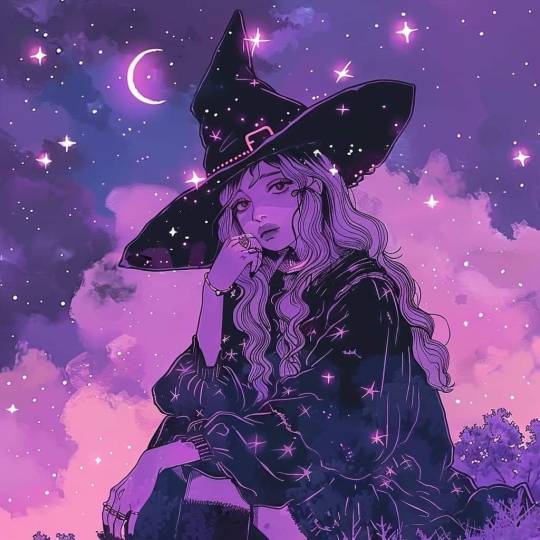
#magick#witch#lefthandpath#dark#witchcraft#eclectic witch#eclectic pagan#tech witch#urban witch#Draconian#fae#faerie#demons#demon work#Necromancy#cosmic#divination#elemental#green witch#hedge witch#sea witch#hearth witch#kitchen witch#storm magic#storm witch#lunar witch#sigil witch#chaos witch#chaos magick#witchblr
442 notes
·
View notes
Text
weaponry in the locked tomb is so interesting because when you break it down it's like:
guns exist in-universe but are used by the freedom fighter terrorist organization almost exclusively
swords are (were?) commonplace enough that gideon was able to find and train with a decently well-balanced two-hander on the ninth, despite the fact that the ninth has no military force or even interplanetary traffic. gideon's sword is at least 20 years old, probably older
swords are definitely still in use within the empire, at least by cavaliers, but likely within the cohort as a whole. to my memory there are no mentions of cohort members carrying military-issue guns
even though they're trained in a variety of weapons and techniques, cavaliers (are supposed to) carry exclusively rapiers. gideon prefers her two-hander and cam carries twin shortswords, but these seem to be rare and shocking exceptions to the standard.
rapiers are used by cavaliers explicitly for the purpose of lyctorhood. they're light enough that a scrawny necromancer without swordfighting experience can pick it up and rely on their cav's training without needing to build the muscle to wield the sword effectively
because of the secretive nature of the megatheorem, and lyctorhood as a whole, most people just follow the rapier rule because it's tradition. it is what is done. harrow makes this pretty clear at the beginning of gtn
cavaliers can carry a variety of offhand weapons. it seems like the full spectrum of middle age weaponry is possible - but still, no guns. not even secretly, as with cam's dual blades. some cavs choose to carry material for their necromancers as their offhand - ortus carries a bowl of bones for harrow, and i can only assume "the powder" mentioned as harrow's choice for gideon's offhand towards the beginning of gtn is some kind of bone dust
from a doylist perspective, all of this creates a aesthetic that starts very analog and gothic and gradually grows into a more standard sci-fi space opera through the series. by ntn, we've hit most of the established genre weaponry tropes that we've come to expect from older futuristic space media like star wars and alien. blasters and guns are standard fare, and it makes sense to hold off on introducing them until the scope of the story gets broader and more interplanetary
from a watsonian perspective, it's a little more difficult to draw concrete conclusions without the context that atn will inevitably provide. but if i had to hedge a guess, i'd say that, as with most things, It's All John Gaius's Fault. when he resurrected the galaxy i'd assume that he wanted to keep the aesthetics of medieval imperialism, and given his 21st century liberalism probably didn't want guns to be part of the equation. but they were anyways - we know this because wake carries a big one - and instead of standardizing firearms within his military and for his lyctors, he clings to the aesthetics of swordplay. please correct me if i'm remembering it wrong, but to my knowledge every gun shown in the series is either directly linked to boe or implied to be sourced from them. jod dooms his own lyctors and military by refusing to update their weaponry.
all of this poses a lot of questions about atn: who will carry a gun, and why? where did the gun come from? why DON'T the lyctors just use firearms? and most importantly: will they be fighting zombies with swords???
#long post#SORRY#if this theory seems half-baked that's because it is#i see all of the stars but i struggle to form a constellation from them#the locked tomb#tlt#gtn#gideon the ninth#htn#harrow the ninth#ntn#nona the ninth#alecto the ninth#atn#tlt spoilers#alecto theories#alectopause#tlt meta#nat og
686 notes
·
View notes
Text
"Abby Allen has no problem with her neighbours peering over her luxuriant hedges to see what she is up to on her farm.
For years she has been carrying out ad hoc experiments with wildlife and farming techniques; in her lush Devon fields native cattle graze alongside 400-year-old hedgerows, with birds and butterflies enjoying the species-rich pasture.
Under the environmental land management scheme (ELMS), introduced by the government in 2021, those experiments were finally being funded. “We have a neighbour who has always been more of an intensive farmer,” she says, but he is now considering leaving fields unploughed to help the soil. “It genuinely is having such a huge impact in changing people’s mindsets who traditionally would never have thought about farming in this way.”
The new nature payments scheme followed the UK’s exit from the EU, when the government decided to scrap the common agricultural payments scheme, which gave a flat subsidy dependent on the number of acres a farmer managed. In its place came ELMS, which pays farmers for things such as planting hedges, sowing wildflowers for birds to feed on and leaving corners of their land wild for nature.
But these schemes are now at threat of defunding, as the Labour government has refused to commit to the £2.4bn a year spending pot put in place by the previous Conservative government. With spending tight and the chancellor, Rachel Reeves, cutting back on infrastructure and hinting at tax rises, a cut to the ELMS scheme may be on her list.
However, government data released last week found the schemes were working to tentatively bring nature back to England’s farmland. Butterflies, bees and bats are among the wildlife being boosted by ELMS, with birds among the chief beneficiaries, particularly ones that largely feed on invertebrates. An average of 25% more breeding birds were found in areas utilising the eco-friendly schemes.
...there are also farmers who welcome the schemes. Allen says the ELMS has helped her farm provide data and funds to expand and improve the good things they were doing for nature. “Some of the money available around things like soil testing and monitoring – instead of us going ‘we think these are the right things to do and providing these benefits,’ we can now measure it. The exciting thing now is there is money available to measure and monitor and kind of prove that you’re doing the right things. And so then you can find appropriate funding to do more of that.”
Allen, who is in the Nature Friendly Farming Network, manages a network of farms in England, most of which are using the ELMS. This includes chicken farms where the poultry spend their life outside rather than in sheds and other regenerative livestock businesses...
Mark Spencer was an environment minister until 2024 when he lost his seat, but now spends more time in the fields admiring the fruits of his and his family’s labour. He says that a few years of nature-friendly agriculture has restored lapwings and owls.
“On the farm, I haven’t seen lapwings in any number for what feels like a whole generation. You know, as a kid, when I was in my early teens, you’d see lapwings. We used to call them peewits. We’d see them all the time, and they sort of disappeared.
“But then, me and my neighbours changed the way we did cropping, left space in the fields for them to nest, and suddenly they returned. You need to have a piece of land where you’re not having mechanical machinery go over it on a regular basis, because otherwise you destroy the nest. We’ve also got baby owls in our owl box now for the first time in 15 years. They look mega, to be honest, these little owls, little balls of fluff. It is rewarding.”"
-via The Guardian, August 23, 2024
#rewilding#nature#sustainability#endangered species#birds#wildlife#england#uk#uk politics#farming#sustainable agriculture#good news#hope
565 notes
·
View notes
Note
My roommate made a joke about wanting to play a sonic the hedgehog tabletop game. Is there a ttrpg for that?
THEME: Sonic the Hedgehog.
Your roommate is about to be surprised because there isn't just a single Sonic ttrpg. There's at least seven.

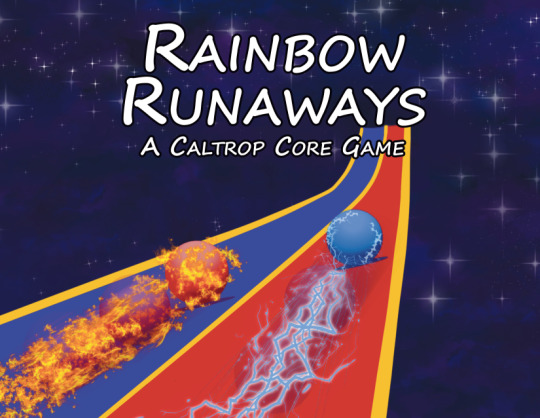
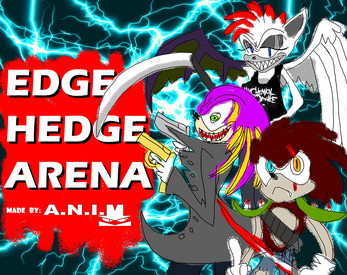

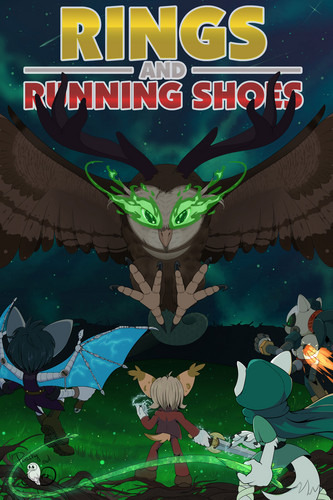
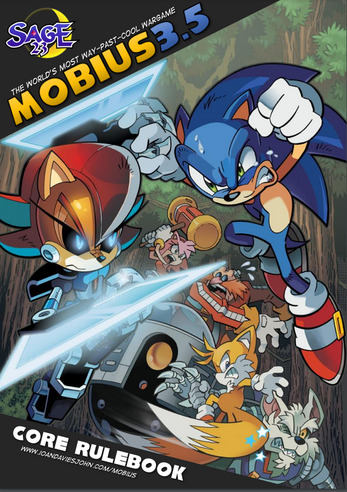

Speeding Bullets!, by Princess Grace.
In SPEEDING BULLETS!, you play as three to five intrepid, plucky anthropomorphic animals on a quest to save the day- or end it. It’s up to you, some six-sided dice, and your beloved SO (Shadow Operator) to determine the fate of the world.
SPEEDING BULLETS! is a single-page Lasers and Feelings hack where your stats are FAST! (hero) and GUN! (antihero). You and your friends will create Sonic OCs, randomly assign them backstories like "Dark Warrior's Advent" or "Purification via Ruination" from a table of 326 genders, and put them up against insurmountable odds, Dr. Robotnik, and their own rivals.
Lasers and Feelings games all have the same basic premise: you have one number that represents your abilities in two different stat, in this case, Fast and Gun. Rolling above the number is good for one stat, while rolling below the number is good for the other. Roll your number exactly? Then something special happens.
What Speeding Bullets takes from Sonic is rivalries, a perpetual quest to defeat Dr. Robotnik, and an alternate suggestion for playing as your character's rivals, taking references from Dark Mirror. The game also comes with a Gender Table, a roll-table that appears to reference every Shadow the Hedgehog ending.
Rainbow Runaways, by UkeleleBard.
You are an animal living in a human’s world. The humans have found you, and the military will pursue you with every weapon, vehicle, and trap they have at their disposal. You’ve only got one option. RUN!
Rainbow Runaways was created for the Caltrop Core game jam, and runs on the Caltrop Core engine by Titanomachy. You can play it Solo, or with a GM, with a deck of cards and a 1-3 d4's per player.
The goal is simple: escape the military by reaching the edge of the city. You track this by using a clock with 12 slices. The deck of cards represents the actions of the military as they pursue you. Your character is composed of three stats and three techniques.
All in all, Rainbow Runaways is succinct and to the point. I think one of the benefits of fan games like this is that much of the lore is already assumed to be known by the players, and as a result reading the game book can be much quicker, since you just need to learn the rules.
Edge Hedge Arena (Beta), by ANIM TTRPGS (@anim-ttrpgs).
Throughout all human history, people have been given names. You thought yours was only mean to be used as an identifier, but you were wrong. Your name was chosen carefully, with the conscious (or subconscious) knowledge that one day it would inextricably link you to a champion of immense power who is also a hedgehog. This “game” serves as a set of instructions for revealing this mighty guardian, so they can defend your honor and name in a battle to the freaking death!
Still in the early stages, Edge Hedge Arena is partially a battle game. This is firmly a pvp game, using your weapons, powers and style to give you an advantage in the arena. However, first and foremost, Edge Hedge Arena feels like a bit of a love letter to the Sonic Fandom, more than Sonic itself. When you make a character, you actually have to search for art of a hedgehog OC online!
Chaos & Control, by farmergadda (@farmergadda).
Chaos & Control is a hack of Lasers & Feelings by John Harper, inspired by a similar hack, Steel & Spirit by Occupied Hex. In this game, Players will take on the roles of colorful, cartoony animal people and go on adventures through fantastic locations, facing off against maniacal foes, and looking really cool while doing so.
Another Lasers & Feelings hack, Chaos & Control adds the use of character types to further differentiate your characters, as well as tokens that can be used to trigger powerful moves unique to your character. For the GM, there's a number of roll-tables to help generate locations, problems, badniks, and so much more.
Rings and Running Shoes, by RingsandRunningShoes.
Welcome to Sonic's World - A universe unique and beyond what you know from the SEGA games! Where, inspired by Sonic and other heroes of the franchise, you and your friends will create a team of heroes that will save the world from the forces of evil!
The system is based on PbtA with heavy modification to fit the care-free power fantasy of Sonic's Adventures, but anyone familiar with the core game, should know the basics. On a very surface level the gameplay loop consists of alternating between "Peace and Quiet" and "Stages" sections. During P&Q your group will rest, prepare for the Stage, roleplay and develop your characters.
One of the benefits for PbtA games is playbooks. Playbooks keep most of the information that a player will need to know in one place, allowing you to choose a character type based on vibes, and then make selections within just the options provided to you. It's excellent for minimizing choice paralysis, and it can make teaching the game simpler, as each player has a number of references to the rules that are specific to their character in front of them at all times.
Mobius, by Ioan Davies-John.
Mobius is a fan-made tabletop wargame based on Archie Comics’ 24-year run of Sonic the Hedgehog, allowing you to fight Large Skirmishes in the gone-but-not-forgotten take on Sonic's World!
It features stats for all your favorite heroes and villains, and rules to suit every play-style from hordes of Eggman Robots to squads of elite Freedom Fighters. There’s an ever-evolving plethora of army books and supplements to represent the many factions within the pages of the world’s most way past cool comic!
Mobius is a tactical wargame, focused on moving little guys around on a map and taking down your opponents. There's plenty of minutiae here for folks who love figuring out what strategies work for them, including various extra rules, as well as 14 different factions to choose from. If you're not sure who you can play this with, the designer has a link to their community discord on their Itch page!
If you want something a little different in theme but similar in spirit, you might interested in Davies-John's other sonic game, a naval wargame set in the same universe: Egg Fleet!
Radical Spin, by Will Uhl (@raffitheowl)
Will you beat your evil twins, stop the robot army, and survive the perils of high school?
Radical Spin is a micro-RPG about melodramatic action animals. Hedgehog heroes, will you beat your evil twins, stop the robot army, and survive the perils of high school? Live out your bad fanfic fantasies today!
I don't know much about this game, but based on what I can find out about it, it seems to be designed to shine when you're exploring Sunday Morning Cartoon-style plots. I'm expecting characters with abilities that are larger than life, as well as a fairly simple rule set that's easy to pick up and learn without much trouble.
You might also be interested in...
My Silly Games recommendation post, which has a link to a Sonic game called Spindash!
I've also got a Ko-Fi account where you can leave me a tip if you like what I do!
163 notes
·
View notes
Text
Pokémon AU! (Yuu & Riddle)

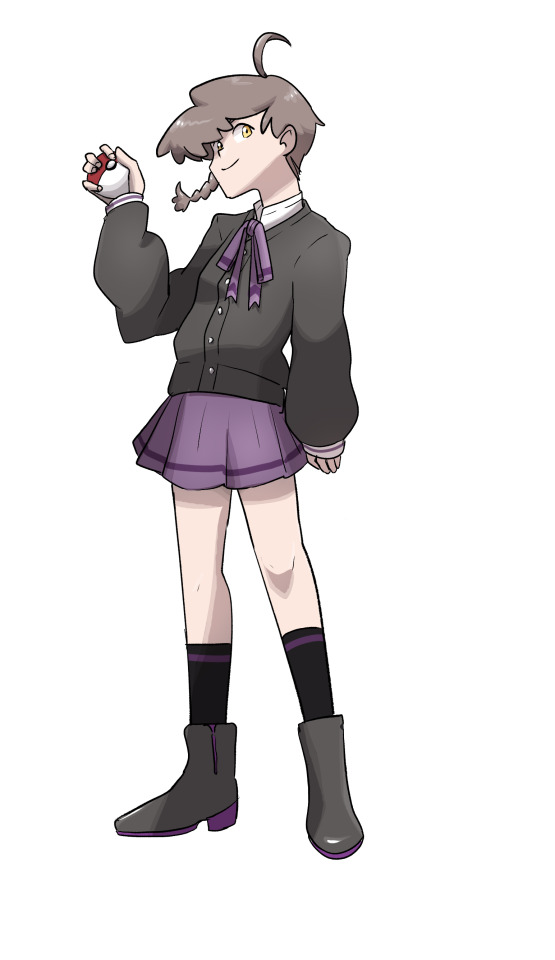
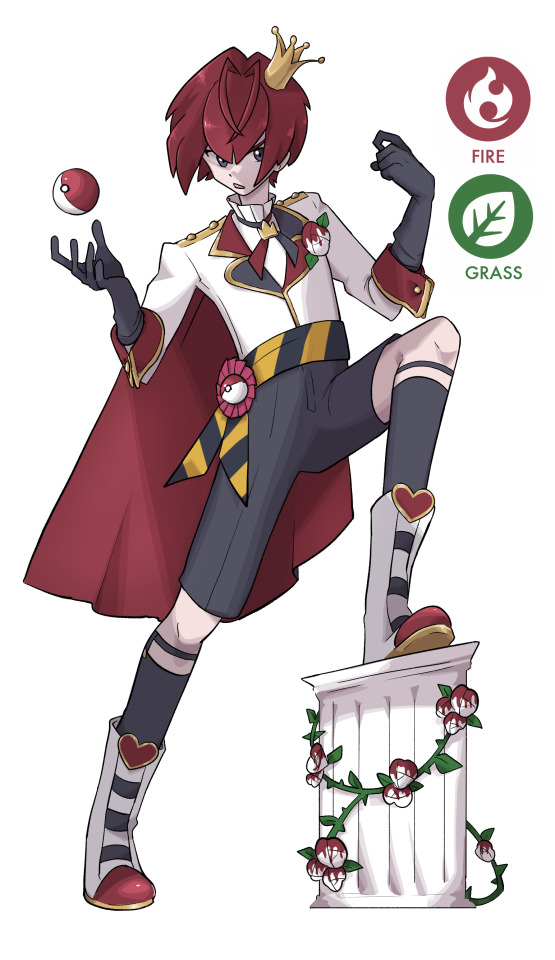
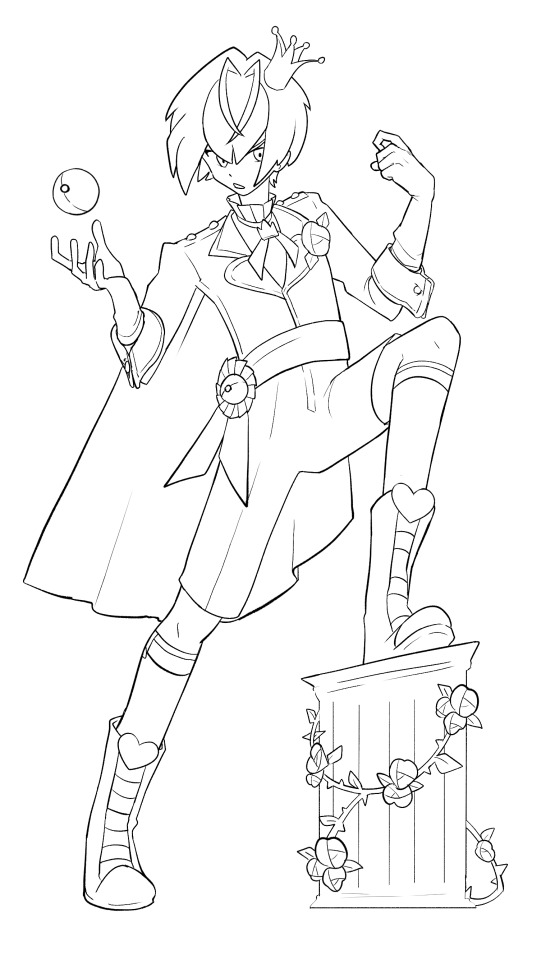
Trainer looking at Grim: What kind of Pokémon is THAT???
Grim, offended: I'm not a Pokémon! I'm a TRAINER. Just you wait! I'll be the greatest Elite Four Champion ever! Myahahahaha!
Yuu: Does that make me the Pokémon in this relationship?
~*~
Riddle Rosehearts was the youngest trainer to ever become a gym leader in Twisted Wonderland, and remains one of the most ruthless.
Gym leader Riddle specializes in primarily fire type Pokémon! Which is why so many new challengers who come prepared with a full team of Water-types are so caught off guard when Riddle's partner Pokémon, Roserade, comes out! Who finishes them off with her signature move "Off With Your Head!"
Losers are enlisted to paint the hedge maze roses of the Heartslabyul gym to appear like Poké balls.
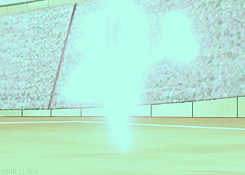
More headcanons and enlarged photos below:
Riddle

Heartslabyul is the first gym most new trainers encounter
It is situated in the same city as the trainer school, where Riddle enjoys tutoring on his days off
His partner Pokémon, Roserade, was gifted to him by a childhood friend (Trey) back when it was still a weak little Budew
Mrs. Rosehearts belongs to the ranks of Nurse Joys and originally wanted Riddle to study medicine. To everyone's shock, obedient young Rosehearts went on to become a formidable trainer and eventually declared, much to his mother's chagrin, his intention to become a gym leader and help new trainers
Riddle is still the youngest gym leader, at 18 years old
Despite his harsh exterior, many trainers still attribute much of their success to Leader Rosehearts' insistence on practicing the basics.
If you are strong and fortunate enough to ever challenge Riddle again, his fully trained 6 team includes Roserade, Ninetails, Flareon, Rapidash, Alolan Rapidash, and Shaymin.
When pressed, Riddle refuses to answer where he met a member of the elusive Shaymin Pokémon.
Riddle can often be found racing or playing polo at the Equestrian club, riding either of his Rapidashs.
Despite all the good he does, Riddle can often be too much of a stickler to the rules and unable to see outside-the-box
He first meets Yuu when he is kicking Ace and Deuce, two new trainers, out of his gym for trying to cheat their way through his hedge maze puzzle and disparaging the idea of going to trainer school, refusing to let them challenge him and effectively ending their dreams of challenging the elite four.
It is only after Yuu challenges him for Ace and Deuce's right to re-enter the gym, and uses both lessons Riddle preaches and unusual outside-the-box thinking to defeat him, that Riddle reconsiders his black and white view of the world.
He gives Ace and Deuce a second chance, on the expectation that they first go to trainer school for a week, and asks if Yuu would consider sharing their unique battling style with the students at the school (despite these techniques not being taught in any books)
In the end, all three, Ace, Deuce, and Yuu, earn their Heartslabyul badges, and Riddle wishes them luck at the next gym.
Yuu

No one quite knows where this trainer came from.
All anyone knows is that they showed up out of nowhere with a talking feline Pokémon no Pokédex recognizes, named Grim.
For whatever reason, Team STYX keeps trying to capture Grim for some nefarious purpose.
But despite Yuu's unimposing figure and having just recently started their journey, they are actually a very formidable trainer and have managed to battle off every one of Team STYX's attempts.
Yuu meets Ace and Deuce while the two of them are being kicked out of Heartslabyul gym and a fast friendship is formed.
Ace declares that they are all rivals now, but they still travel together from city to city.
To Ace and Deuce's horror, Yuu seems to enjoy sleeping over in abandoned and haunted houses on their journey
Ghost Pokémon seem to particularly like Yuu
Yuu sometimes runs into an interesting person during their travels, a man they have nicknamed Tsunotaro
Tsunotaro seems to always show up whenever Team STYX is getting up to no good, and helps Yuu battle them off and clear out various Team STYX bases of operation throughout Twisted Wonderland.
Ace and Deuce have never met this mysterious Tsunotaro, but if they did they would be shocked to discover that he is actually Malleus Draconia, Twisted Wonderland's infamous and terrifying Elite Four Champion
But to Yuu he's just Tsunotaro, a weird but nice guy who seems to think fighting off a crime syndicate together counts as a date
#twisted wonderland#twst#twst fanart#twst yuu#twst yuusona#riddle rosehearts#twst riddle#disney twisted wonderland#twst headcanons#pokemon#pokemon au#twisted wonderland x pokemon#twst x pokemon#malleus x yuu#mallyuu#my art
736 notes
·
View notes
Text
Types of Witches
Animist Witches - You've probably been told that animations are created by quickly flipping through lots and lots of still frames, but this is all an elaborate coverup. Obviously that shit is magic.
Cristal Witches - Made from a blend of Chardonnay and Pinot Noir grapes, Cristal Witches are aged for six years, then left for a further 8 months after dégorgement.
Dianic Witches - Only witches named Diana are allowed to join. No, Diane, you aren't "close enough".
Elemental Witches - This is who you call if the heating element on your stove goes out.
Gardnarian Witches - Very good at gardening. Less crossover with Hedge Witches than you might expect.
Green Witches - They are green. What are you not getting? Think Wicked Witch of the West. The melting in water thing was greatly exaggerated for the story, though. That almost never happens.
Hearth Witches - This branch of witchcraft is known for their fire building techniques, most likely developed in response to living in drafty houses.
Hedge Witches - Work with topiary mostly, but may dabble in bonsai or flower arranging.
Kitchen Witches - Like Sandwiches but less specific.
Solitary Witches - Hard to say what they get up to as most of them are extremely reclusive and/or off the grid entirely.
Traditional Witches - Very concerned with broom regulations and authenticity. Will give you shit if your pointy hat is not historically accurate.
887 notes
·
View notes
Text
@thegodwhocums in response to your post for anon!
First Anon, huge props for seeking sobriety and I understand your desire to stay on anon. Trance state and altered states of consciousness can be totally accomplished during sobriety, without the need to use any substances (including milder 'flying ointments').
Here are just my tips and resources coming the context of Traditional Witchcraft:
First, definitely look up brain wave states :) Trance is a measured brainwave thing, right. And we know how different brain states feel. So you should start by researching the expected sensations and mental states associated with entering trance! Don't leave yourself in the dark.
In Traditional Witchcraft there are close parallels between trance state and spirit flight (or 'hedge crossing'), because spirit flight is undertaken in a trance state. Therefore any guide you find that teaches spirit flight/hedge crossing (and even generic 'astral travel') is probably on some level also a guide to induce trance state.
Many such guides specifically for spirit flight encourage finding trance state through rhythm and meditation, as opposed to ecstatic movement; this is of course because spirit flight is usually undertaken while the body is physically at rest.
Don't take meditation to mean zen meditation of clearing the mind. Rather in this context it's a paradox of relaxed focus, like the cat waiting at the gopher hole.
Entering a relaxed trance state is greatly facilitated by sonic drivers, which are rhythmic sounds (like drumming or chanting) that carry the 'pulse' you ride on towards trance state (youtube ""shamanic drumming"" to find great audio tracks). This rhythm is especially well accomplished through careful counting of the breath (look up 'breath work', not to be confused with breath play; deep and rhythmic breathing, even without hyperventilating or limiting oxygen, can help rapidly induce trance).
Guided meditations themselves can be a powerful way to experiment with trance states. Seek out relaxing meditations that involve systematically relaxing the body, especially ones that combine counting down. But these can be completely secular guided meditations for relaxation on youtube, you don't have to find one necessarily written for 'trance state', although many exist.
Especially with spirit flight, entering trance state very often is accompanied by counting down to descend into the underworld or fairyland. Very common meditations (which do not have to be visual in nature) involve taking your consciousness downwards through a tree, down a well, or to the bottom of a lake. You can combine this with counting, counted breath, sonic drivers, and progressive relaxation to achieve deep trance states.
For example, you can record a meditation for yourself (or just remember the steps) wherein you become physically relaxed (sitting or lying down), and count your breaths (in/hold/out/hold of equal lengths; not limiting oxygen). Every time you take three complete breaths, you imagine taking one additional step into a lake. As the water rises up around your body, you focus on relaxing that part of the body. It takes 13 steps (39 breaths) to completely submerse yourself in this imagined lake, and when you do you see a door at the bottom of the lake. You go through it with the knowledge that it will return you to your body within a full trance state. All the while, you can have on a rhythmic drumming track.
A meditation such as this one may need to be practiced several times, but if you get along with the method of relaxed trance, it's the kind of thing that can really take people in.
Other hints are to block the vision to partial or full darkness, to always burn an incense of the same scent (or daub an EO nearby, etc), to always use the same audio track, and especially to always use the same charm or prayer to begin the session.
But a full relaxed meditation can put people to sleep or be a struggle if you have focus issues. Try using a technique like Horne's 'awakening the second sight' exercises in A Broom at Midnight (which I extremely recommend for those interested in the intersection of trance and witchcraft). This technique is to sit in a dark room with a single lit candle and focus on your 'second skin' until it feels like it awakens and comes alive.
If you have a lot of space, trance can be induced more ecstatically by 'treading the mill' or casting a circle by running, walking, or dancing around the circle; you can also dance or run to enter an altered state. I have arthritis and no experience with these things so I couldn't comment further.
Any technique you like will take time to get right. Asking your gods or spirits to help you enter trance is extremely useful, they can sort of 'carry' you into trance (or dunk you underwater, so to speak).
At first, expect to only enter a shallow trance, especially if you can't do extended and deeper exercises. Entering a deep trance may take 30 minutes, or an hour, or a significant period of time. With experience, you may be able to enter shallow trance states very rapidly, but deep trance typically always takes some amount of effort.
Before you enter any trance state you should have a list of things to do to exit trance state and readjust. These are simple things that include envisioning your second skin perfectly aligned with your physical skin, wiggling your fingers and toes, doing psychological grounding (name 5 things you can see, 4 things you can touch, 3 things you can hear, etc), eating food and drinking water, turning on the lights, turning off all sonic drivers (and eliminating incense or other scent triggers), turning on the television or grounding music, and talking to people.
Just have a list of things to do that are very within your comfort zone.
Trance isn't dangerous; people enter trance and flow states all of the time. But knowing the process can be under your control can feel a little unsettling and destabilizing, so it's always a good idea to plan to fill your space back up with good and grounded vibes before you begin. Just as often as you practice entering trance, you should practice intentionally exiting trance and returning to an everyday state of mind. You should be able to do so on purpose and when you choose to.
The only caution I have is if you find yourself entering trance states unexpectedly or when it's not safe to do so, such as when you're driving. If this happens I encourage you to stop practicing trancework for a while, and examine your practices for a lack of clear triggers (like sounds, scents, sights, chants or incantations, etc). If your triggers are too generic or aren't clearly established at all, you may be at a higher risk of accidentally training yourself to slip into a trance state when it's unwise or dangerous given the circumstances. In addition, some people may not necessarily be able to safely practice trance on a regular basis without falling into this - we all have unique minds, after all.
Besides that Horne book above, check out Crooked Path by Kelden which has a few exercises for entering trance state.
84 notes
·
View notes
Text
Witches & Witchcraft: Types & Definitions
There is an abundance of types of witches, some being more common than others, for example, death witch or hedge witch. I have provided the different types of witches with a brief description/definition of what they study, believe and tools most commonly used for each.
The types of witchcraft is entirely up to the individual which they prefer to do. One person may only follow on type of magick whereas another may follow several. Listed are a handful of the many kinds, but I'm listing the most common/known types of magick/witchcraft that people fall into.
I have grouped some witches together as they fit together under the same or similar definitions.

Types of Witches
Religious witches;
Christian, Satanic (Theistic), Laveyan Satanic, Hellenic, Celtic and Wiccan, etc. are witches that follow a primary belief system and incorporate their religion into the craft.
Non-Religious witches;
Secular - doesn't work with [a] deity(ies).
Science - (also a craft type), uses metaphysical and scientific fads and theories mixed together.
Other types of witches;
Solitary - works alone and is not part of a coven. Won't typically work with other witches for spell work or any part of their practice.
Eclectic - a practice that includes multiple practises from different areas. A mixture of all practices, may practise one more than another, or all equally.
Hereditary/Generational - a witch who is born into a family whom practice the craft. The term 'Blood witch' is often a hot topic of controversy as to whether it makes one a more powerful witch.
Traditional - a type that is based on honouring the traditional ways of magick, which also ties in nicely with generational/hereditary witches.
Chaotic/Chaos - a witch who utilizes new, non-traditional and unorthodox methods. It's still relatively new and highly individualistic practice while still drawing from common forms of magick.
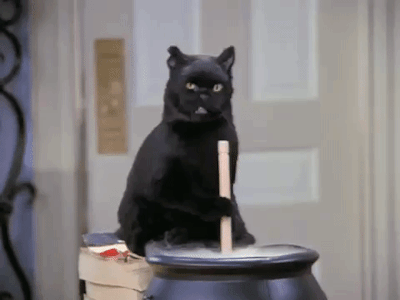
Types of Witchcraft/Magick
Green Witch; A witch who uses natural magick, such as creating blends of different plants, or primarily using herbs and/or crystals spells in their craft. Tools mostly consist of herbs, crystals, stones, flowers, soil or other greenery.
Hedge Witch; Also know as an astral witch, this type of magick is orientated around spiritual work such as astral projection, lucid dreaming, spirit work, healing and out-of-body magick. Tools mostly consist tarot cards, runes, pendulum, stones, crystal ball, mirrors & candles.
Dream Witch; Mindful and internal magickal practice mainly based from interpreting dreams and/or engaging in lucid dreaming. Practises used to 'de-code' symbols and messages in the dream world can be used similarly to how one would use divination techniques. Tools mostly consist of dream catchers, candles, books of glossaries of symbols.
Sea/Ocean; Derived from materials and abstract ideas involving ocean and the oceanic world. Sea or ocean magick can be worked with by using things found on or relating to a beach/lagoon. A sea witch might draw their energy from such tools. Tools commonly consist of driftwood, pebbles/stones, seashells, ocean water, bones, seaweed, candles.
Storm/Weather; magick used through combining one's energy with the weather; most commonly rain. Weather witches will collect different ingredients provided by the weather, absorb energy from storms, manipulate winnds, or perhaps predict the weather. Tools most commonly consist of rain/snow water, symbols/weather maps, crystals.
Cottage/Hearth; Magick that is weaved and worked or embedded into mundane tasks around the house or for loved ones. Cottage magick is usually worked into cleaning, hobbies or cooking. Tools commonly consist of essential oils, incense, bells, flowers, cleaning utensils, spices and herbs.
Tea Witch; Creating blends of teas for protection, remedies or even to use for tea-leaf divination. Tools commonly consist of tea, herbs, waters, spices.
Tech Witch; Use of technology in the craft, mostly based through phones or computers. Mostly used for storing of information, grimoires, spell books and Book of Shadows/diaries. Tools consist of apps on the phone, digital sigils, online blogs and pages.
Garden/Flora; Mostly (if not all) focused on herbal and botanical measures. Many garden witches have their own garden and plant flowers and herbs to draw in energy for their home and to include in rituals and spells. Tools commonly consist of flowers, soil, seeds, greenery, twigs/tree branches, leaves.
Elemental; Using all 4 (or 5) elements in an honouring or acknowledging form. A witch can choose to work with all, or singular elements. One may have a dedicated area on their alters to a particular elements. Tools consist of anything related to said element.
Faery/Fae; Magick for those who communicate with, and/or work with the Fae. Those whom work with fae may also leave offerings regularly as thanks for the assistance of a faery in their spell work. Tools commonly consist of anything sweet, sigils, offerings.
Spirit; A practice which an individual will perform spell work in conjunction with (or the help of) any manner of spirit, including Ouija, demon spirits, spiritual contact of any kind, working with ancestors. Tools commonly consist of crystals, bells, incense, Ouija boards, tarot cards, pendulums, sigils.
Draconian: The use of dragons and dragon imagery; whether it be trough astral matters or in spells and rituals. May also be connected with dragon spirits on their journey. Tools commonly consist of dragons art, statues, candles.
Seasonal; Utilizing and drawing energy from specific time periods of the year for their magick. One individual may feel more powerful at a particular time of year. It can also be spread out into the 4 seasons. Tools commonly consist of herbs related to certain seasons, stones, ruins and the weather.
Music; Can be through singing, humming, playing an instrument, creating music or having it on during spell work to add energies. Tools consist of speakers, instruments, voice, chimes, lyrics & sheet music.
Art & Craft; Anything from painting to knitting to building something. Tools consist of anything you can craft with.
Sigils; Working majorly with sigils and the intent that can be put into them to activate their power. Tools commonly used are pens, paper, makeup, candles.
Astronomy/Space/Luna; Correlates their belief in conjunction with the planets, stars and/or moon. Versed in moon phases and tend to do spell work at night rather than day time. Tools commonly used are horoscopes, calendars, charts, moonlight, moon water.
Energy; Those who prefer to do magick through energy exercises and manipulation rather than many physical tools or materials. This may also include aura work. The only tools needed for this type is yourself.
Crystal; Magick that is worked commonly with stones and crystals. The practise may include chakra balancing, crystal meditation and even spell work or rituals. Extensive knowledge of stone, including how to identify them. Tools most commonly used are crystals, books, grimoires and stones.
Literacy; Those who practise through books and literature - studying the craft after the 'beginner' phase of learning. Tools are books, poems, written work.
#witch#witchcraft#witchblr#pagan#wicca#witches#pagan witch#paganism#pagan wicca#witches of tumblr#baby witch#beginner witch#new witch#pagans of tumblr#witchcore#witch community#witch tips#witchy vibes#witch aesthetic#witchy woman#paganblr#hellenic pagan#celtic paganism#polytheism#grimoire#book of shadows#magick#folk magic#spell
283 notes
·
View notes
Text
Hate Yourself - Chapter One

series warnings: female!reader x oliver quick, past/implied felix x oliver, dub-con, stalker behavior, voyeurism, degradation, dacryphilia, bloodplay, gaslighting, manipulation, untagged story elements (the warnings aren't exhaustive!), DEAD DOVE DO NOT EAT bbgirl
summary: you’re hired as a maid after Oliver comes to own Saltburn, and find your employer to be very invested in your work
minors dni!

Your palms felt sweaty as you gripped your bags, staring into the massive gates of the mansion. You were tempted to turn around and run as the grandiosity of the building overwhelmed you. It felt like the iron jaws of the gate could open and eat you at any moment. Your torment was short-lived, however, as the creaky gates opened as you nudged them forward. Just beyond the courtyard, imposing wood doors awaited. Gravel crunched underfoot as you made your way over to them. Just before you could knock upon the doors, they swung open to reveal a graying, stern man.
"Welcome to Saltburn, miss." The man gives you a tight smile that doesn't quite reach his eyes. "You must be the new housekeeper?"
"Yes, that would be me," you laugh awkwardly, unsure of what to say next.
"Lovely to meet you. My name is Duncan, head butler. Anthony will take your bags to your quarters. Come, and I'll show you around the grounds." You set your bags down and hurry after Duncan, who, despite his age, has a considerable stride.
Each room in the house seemed grander than the next. The soft autumn sunlight pouring in from the floor-to-ceiling windows illuminated the formal dining room. Sheer red curtains floated elegantly to the sides, fluttering as you swished by.
"Wow," you breathe out as you catch a glimpse of the massive garden. You can't help but gape at the massive hedges that seem to form a huge wall of green or at the multiple elegant fountains spraying in the air. "The grounds are so beautiful."
Duncan casts a fleeting glance through the window and continues on with the tour. Your head spins as you try to remember all the rooms and build a mental map of the estate, but the rooms seem to never stop coming. You are lost in the task when you finally arrive in the master bedroom.
"Here is the master bedroom," Duncan says, startling you out of your trance. The room is grand, with large wooden furniture and sumptuous fabrics and paintings. The closet door is ajar, revealing a closet full of crisp suits and hanging shirts without a single wrinkle. Expensive ties are neatly tucked into an organizer above a row of pristine dress shoes. "Sir Oliver is particular about how this room is made up, but Lyuba will teach you the specifics later."
You give him a nod, soaking in the finery and sheer wealth of this place. It's a far cry from the squatty brick council house you grew up in. The momentary thought of home makes your eyes prickle. You push the thought away and follow Duncan as he continues. Tears won't help you navigate the maze that is Saltburn.
~
You flop into your bed with a deep sigh. The rest of the day passed so quickly as Lyuba, the woman whose job you were taking over, taught you the ins and outs of the job. When you close your eyes, you swear you can still see towels and sheets being folded. Lyuba was impressed at the speed at which you picked up the proper technique for all the linens, but you were no match for her practiced hands. It would take some time before you perfectly replace the experienced housekeeper. No use worrying about it now, you thought as you slipped towards sleep. The room you had in the servant's quarter of the estate was still larger than any you'd ever stayed in.
Right before sleep could overtake you, you heard a loud creaking sound. Icy fear flooded into your chest as you bolted upright. Your eyes weren't adjusted to the room's darkness, but it didn't stop you from frantically peering into the dark for the source. Through the shadows, you couldn't make out anything specific. After a few moments, you noticed that your door was open a crack. Did I leave it open? You aren't sure if you did. Your furiously pounding heart starts to slow, and you rise out of bed to close it. It is an old house, right? Surely some shifting floorboards or creaking of the structure caused the sound. Must've forgotten to shut the door, too. You chided yourself for getting so worked up over the noise. Fears soothed, you climbed back into bed and dozed off.
~
"Not so much water," warned Lyuba as you went to lift the mop out of the bucket. You quickly wrung the mophead out a bit more before starting on the tiled floor. You and Lyuba cleaned one of the guest bathrooms mostly in silence, only interrupted when she caught a mistake you were making. You turn to see Lyuba's snowy white bun bobbing in time with her careful movements. The older woman was only going to stay to teach you until the end of the week before she embarked on her retirement. You were at first shocked to find she was the only maid for the sprawling estate, but you quickly realized why.
This place is a fucking ghost town.
It had been three days since your arrival, but you had only glimpsed the owner of this place a handful of times. He was the only actual resident, not counting the help. Oliver Quick was his name, according to Duncan. You were debating whether to ask Lyuba more or let the mystery about the man of the house linger.
Curiosity won.
"Lyuba," you started cautiously, "what is the owner like?" You notice her movement halt with your question.
"Why?" Her response comes almost as an accusation. She turns fully to face you, and her face searches yours carefully.
"Oh, I just was wondering because I've hardly seen him," you reply, unsure of how to respond.
Lyuba shuffles close to you until you are nearly touching. She gently grabs your wrist. "Strange. Be careful, girl," she whispers in a gentle tone. "I worked for the family before him," she continues, hushed and serious as the grave, "and then he swoops in and inherits that place." She drops your wrist and stares into your eyes intently. "Practically a stranger when he-"
"Hello." You and Lyuba jump as you see a man leaning against the doorframe.
"H-hi," you stutter, taken by surprise. His eyes meet yours, and you're drawn in by the shocking blueness of them.
"My name is Oliver," he offers, "and you must be Lyuba's replacement?" A small smile makes its way across his face.
"Yes," you breathe out and offer him your name. Your surprise at being interrupted fades, and you finally take him in. He wears a fine button-down shirt and slacks, his hair combed back without a single strand out of place. You suddenly feel shabby in your black uniform dress and messy hair. You flick your wet hands behind your back to try and appear more together. His unnerving gaze has you self-conscious.
"Pleasure to meet you. I'm sure Lyuba has taught you all you need to know." His eyes dart to her briefly but soon return to you. He stretches in the doorway, and you can't help but see the muscles of his arms under the thin cotton of the shirt. "It's nice to have a new face around."
"Ah," you splutter, face hot. "I'm sure it is." You can't help but feel skittish as he watches you return to your work. He'd always made himself scarce before today, so his presence feels overwhelming so near to you.
"We have much to do," cuts in Lyuba, her annoyance clear, "and we need to finish, sir." She turns her back to him and returns to her cleaning.
"Of course," replies Oliver, lifting his hands in a gesture of resignation. "Don't stop on my account. I wouldn't dare interrupt her training." He backs out of the bathroom, but not before throwing you a small wink.
You shake your head and return to your work. Lyuba's hushed condemnation and Oliver's surprise entrance have you cleaning in silence. You could practically taste the animosity between the two of them but get the sense you won't get much more out of Lyuba today. Instead, you pass the day with the gnawing feeling that you're missing something very important.
#saltburn#saltburn 2023#oliver quick#fanfic#fanfiction#barry keoghan#f!reader x oliver quick#hate yourself
438 notes
·
View notes